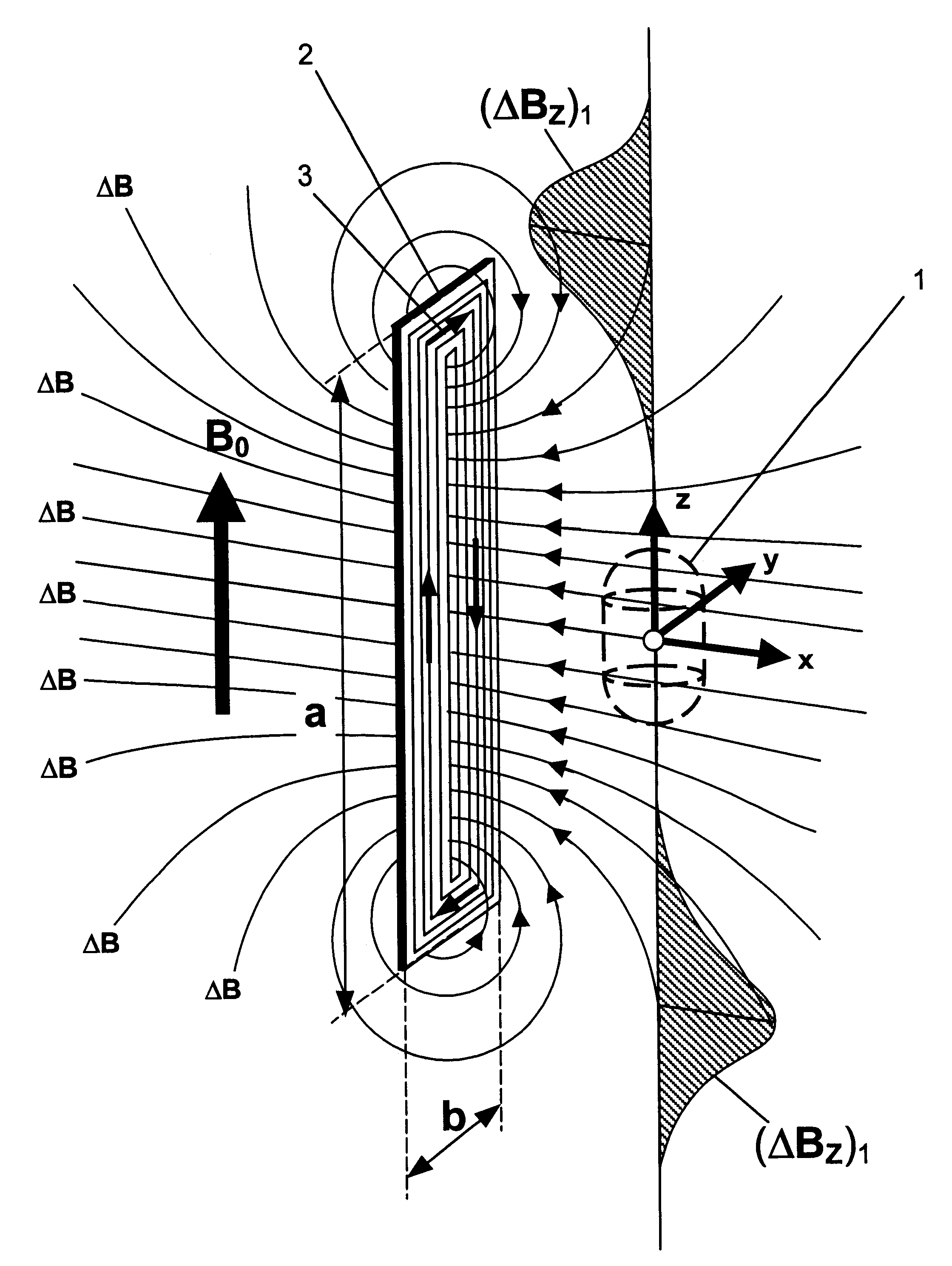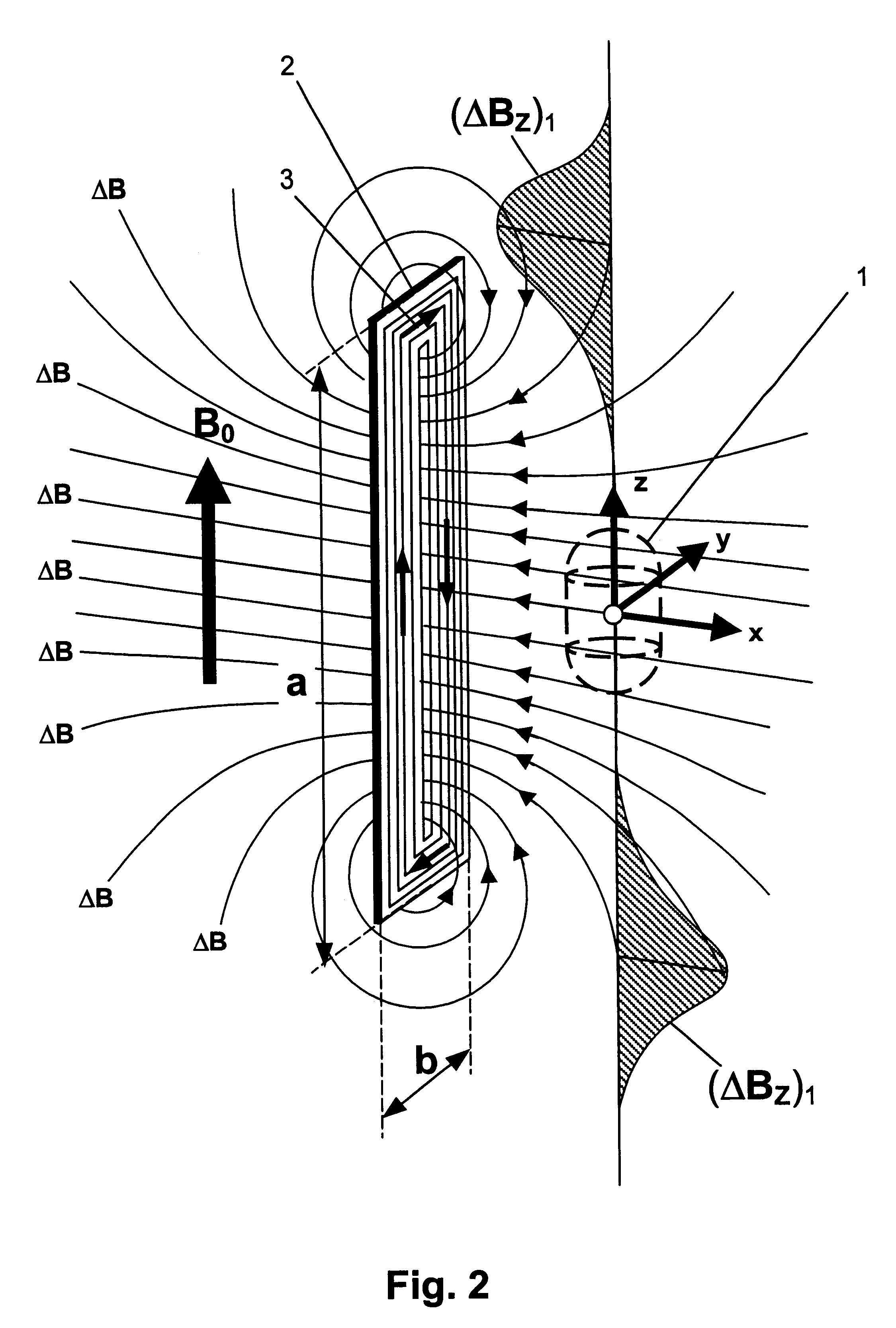Superconducting NMR resonators with macroscopically homogeneous superconductor distribution
a superconductor distribution and superconductor technology, applied in the direction of magnetic resonance, acoustic wave reradiation, measurement devices, etc., can solve the problem that the nmr spectrum no longer has a significant influen
- Summary
- Abstract
- Description
- Claims
- Application Information
AI Technical Summary
Benefits of technology
Problems solved by technology
Method used
Image
Examples
first embodiment
In the inventive idea, the first Z structure consists of strips parallel to the B.sub.0 field followed by a second structure with strips perpendicular to the B.sub.0 field, which is again followed by a third structure with strips parallel to the B.sub.0 field. FIG. 10a shows an example thereof, wherein the three Z structures are selected such that an RF resonator of the type of FIG. 10a in patent [6] can be produced therefrom. The region of the Z structures from which the RF resonator is to be produced is hatched in FIG. 10a (region 7a). The predominantly field-generating conductors are produced from the left Z structure 8a which is the closest to the measuring sample. The upper and lower transverse conductors are produced from the central structure 9a and the capacitive portions are produced from the right structure 10a. The right conductor structure 10a has twice as many conductors as the left conductor structure 8a to permit production of the capacitive portions.
The principal pro...
second embodiment
For this reason, in the inventive idea, the central conductor structure 9a of FIG. 10a is replaced by the more transparent conductor structure 9b of FIG. 10b. Carrying out of the above-described transformation produces the structure of FIG. 12b which is substantially more transparent for RF field lines and therefore has better RF properties.
Examination of the two above-described embodiments for remaining error sources produces the two following findings: 1. The disturbing external field which acts on the superconductor must be sufficiently small that the working point is still within the linear region of the magnetization curve, i.e. there is a linear relation between current in the superconductor and disturbing field. If this is not the case, a possible anisotropy of the superconductor must be taken into consideration. Anisotropy means that currents which are parallel to the B.sub.0 field have a different critical current density than those perpendicular to the B.sub.0 field. This ...
third embodiment
Since mainly the anisotropy of the superconductor can produce significant disturbances, the inventive idea presents a variant which omits rotation or displacement of current paths. Three Z structures are also used in this case. The two outer structures are formed with inclined strips according to FIG. 9f and the central one with horizontal strips according to FIG. 9c. The two outer conductor structures have the advantage that a portion of the conductors produce a galvanically coherent structure which extends in the z direction and at the same time permits connections at the edges of the two conductor structures. These connection possibilities permit direct connection to the horizontal strips of the central conductor structure without requiring previous rotation or displacement of current paths.
FIG. 13 shows an example thereof, wherein the conductor structures are selected such that an NMR resonator of the type of FIG. 2c in the patent [8] can be produced. The RF resonator has three ...
PUM
 Login to View More
Login to View More Abstract
Description
Claims
Application Information
 Login to View More
Login to View More - R&D
- Intellectual Property
- Life Sciences
- Materials
- Tech Scout
- Unparalleled Data Quality
- Higher Quality Content
- 60% Fewer Hallucinations
Browse by: Latest US Patents, China's latest patents, Technical Efficacy Thesaurus, Application Domain, Technology Topic, Popular Technical Reports.
© 2025 PatSnap. All rights reserved.Legal|Privacy policy|Modern Slavery Act Transparency Statement|Sitemap|About US| Contact US: help@patsnap.com



